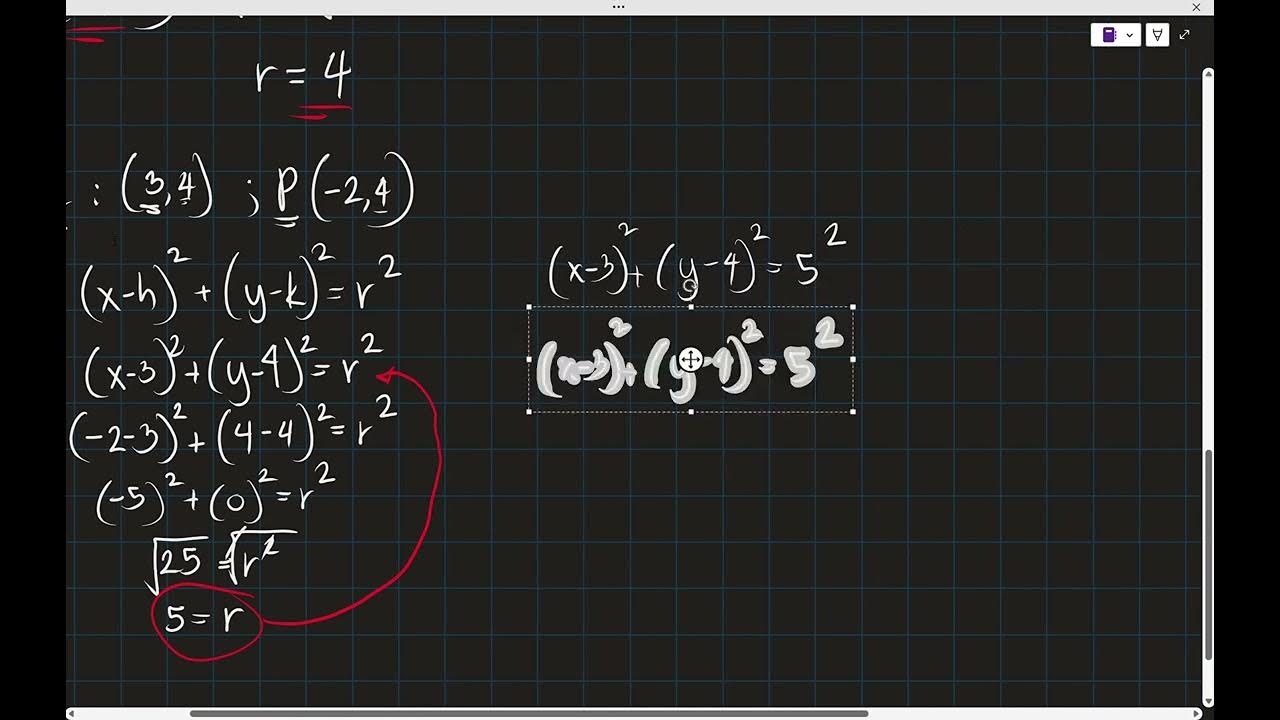Circles: radius, diameter, circumference and Pi | Geometry | Khan Academy
Summary
TLDRThis video explores the fundamental properties of circles, emphasizing the circle's presence in various aspects of the universe. It covers key concepts such as the radius, diameter, and circumference, explaining their relationships and significance. The transcript dives into the discovery of pi (π), the constant ratio of a circle's circumference to its diameter, and how this fascinating number appears across different circles, always maintaining a consistent value of approximately 3.14159. The video concludes with practical examples, showing how these properties can be used to calculate the circumference and radius, encouraging deeper mathematical understanding of circles.
Takeaways
- 😀 The circle is one of the most fundamental shapes in the universe, appearing in natural and man-made forms like orbits, wheels, and molecules.
- 😀 A circle is defined as all points equidistant from the center, and the distance from the center to the edge is called the radius.
- 😀 The diameter of a circle is the distance across the circle, passing through the center, and is twice the length of the radius.
- 😀 The circumference is the distance around the circle, and it is related to the diameter through the formula: Circumference = pi × diameter.
- 😀 The ratio of the circumference to the diameter is a constant, approximately 3.14159, known as pi (π), which appears in many areas of mathematics and the natural world.
- 😀 Pi (π) is a transcendental and irrational number, meaning its decimal representation goes on forever without repeating.
- 😀 The formula for the circumference of a circle can also be written as Circumference = 2 × pi × radius.
- 😀 In practical calculations, it's common to leave answers in terms of pi (π) rather than approximating it as a decimal.
- 😀 To find the diameter from the circumference, divide the circumference by pi: Diameter = Circumference / pi.
- 😀 The radius can be calculated as half the diameter, so if the diameter is known, simply divide it by two to get the radius.
Q & A
What is the fundamental significance of the circle in our universe?
-The circle is one of the most fundamental shapes in our universe. It appears in various natural phenomena such as the orbits of planets, the structure of molecules, and even in human-made objects like wheels.
What is the definition of the radius of a circle?
-The radius of a circle is the distance from the center of the circle to any point along its edge. All points on the circumference of a circle are equidistant from the center, and this distance is the radius.
How is the diameter of a circle related to its radius?
-The diameter of a circle is twice the length of the radius. It is the widest distance across the circle, passing through the center.
What is the circumference of a circle?
-The circumference is the distance around the edge of the circle. It can be calculated by multiplying the diameter by the constant pi (π), or equivalently, by multiplying 2 times pi and the radius.
What constant ratio connects the circumference and diameter of any circle?
-The ratio of the circumference to the diameter of any circle is a constant, approximately 3.14159. This number is known as pi (π).
What is pi (π) and why is it significant?
-Pi (π) is an irrational number, approximately 3.14159, that represents the ratio of the circumference of a circle to its diameter. It is a fundamental constant in mathematics and appears in many equations related to circles.
How did early mathematicians approach the calculation of pi?
-Early mathematicians measured the circumference and diameter of various circles with primitive tools and found that the ratio was always close to 3. As they improved their measurements, they discovered that this ratio was closer to 3.14159, and it never repeated, revealing pi as a unique and fascinating number.
How is the formula for the circumference of a circle derived?
-The formula for the circumference, C = π × D, comes from the constant ratio between the circumference and the diameter. Since the diameter is 2 times the radius, the formula can also be written as C = 2πr, where r is the radius.
How can you calculate the circumference of a circle if the radius is known?
-To calculate the circumference of a circle, use the formula C = 2πr, where r is the radius of the circle. For example, if the radius is 3 meters, the circumference is 6π meters.
If the circumference of a circle is 10 meters, how can the diameter and radius be calculated?
-If the circumference is 10 meters, you can calculate the diameter by dividing the circumference by pi (π): D = 10/π meters, which is approximately 3.18 meters. To find the radius, divide the diameter by 2: r = D/2, which gives approximately 1.59 meters.
Outlines

此内容仅限付费用户访问。 请升级后访问。
立即升级Mindmap

此内容仅限付费用户访问。 请升级后访问。
立即升级Keywords

此内容仅限付费用户访问。 请升级后访问。
立即升级Highlights

此内容仅限付费用户访问。 请升级后访问。
立即升级Transcripts

此内容仅限付费用户访问。 请升级后访问。
立即升级浏览更多相关视频

Lingkaran Bagian 1 - Konsep Dasar dan Persamaan Lingkaran Matematika Peminatan Kelas XI

Sudut Pusat dan Sudut Keliling Lingkaran | Latihan 2.1 Halaman 57

Sudut Pusat dan Sudut Keliling Lingkaran - Matematika SMA Kelas XI Kurikulum Merdeka

Review on Circles

Plasma, The Most Common Phase of Matter in the Universe

WHAT IS PHYSICS?
5.0 / 5 (0 votes)
